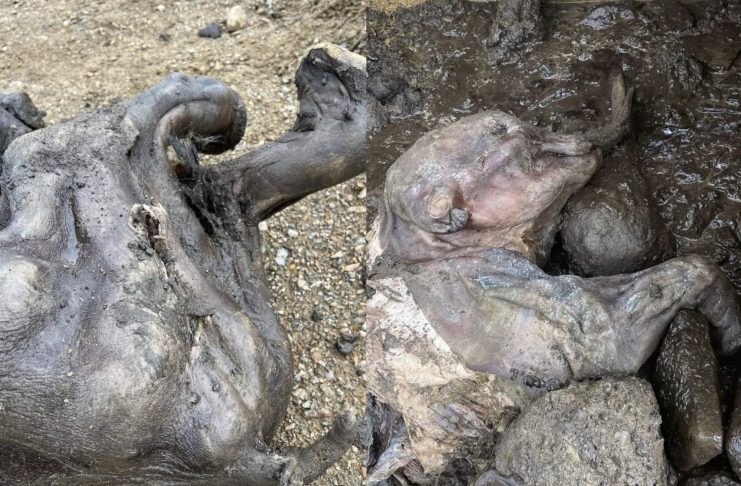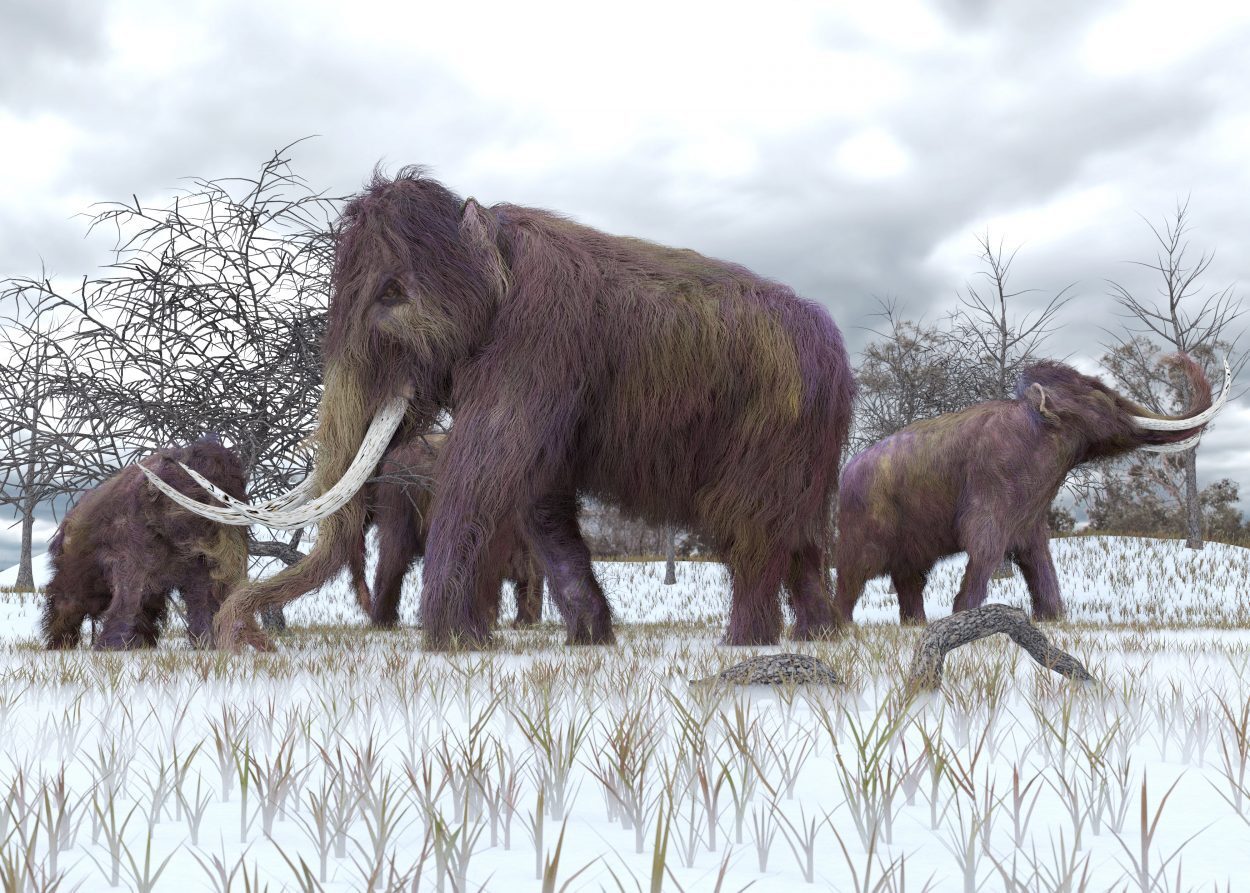This is a joint news release with Trʼondëk Hwëchʼin.
On June 21, 2022, a near complete, mummified baby woolly mammoth was found in the Klondike gold fields within Trʼondëk Hwëchʼin Traditional Territory. Miners working on Eureka Creek uncovered the frozen woolly mammoth while excavating through the permafrost. This is a significant discovery for Trʼondëk Hwëchʼin and the Government of Yukon. Trʼondëk Hwëchʼin Elders named the mammoth calf Nun cho ga, meaning "big baby animal" in the Hän language.
The Yukon has a world-renowned fossil record of ice age animals, but mummified remains with skin and hair are rarely unearthed. Nun cho ga is the most complete mummified mammoth found in North America.
This recovery could not have happened without the collaboration between Brian McCaughan of Treadstone Mining, Trʼondëk Hwëchʼin and the Government of Yukon. In the months to come, Trʼondëk Hwëchʼin and the Government of Yukon will work together to respectfully preserve and learn more about Nun cho ga and share these stories and information with the community of Dawson City, residents of the Yukon and the global scientific community.
The Yukon has always been an internationally renowned leader for ice age and Beringia research. We are thrilled about this significant discovery of a mummified woolly mammoth calf: Nun cho ga. Without strong partnerships between placer miners, Trʼondëk Hwëchʼin, and the Yukon government, discoveries like this could not happen.
Minister of Tourism and Culture Ranj Pillai
This is as a remarkable recovery for our First Nation, and we look forward to collaborating with the Yukon government on the next steps in the process for moving forward with these remains in a way that honours our traditions, culture, and laws. We are thankful for the Elders who have been guiding us so far and the name they provided. We are committed to respectfully handling Nun cho ga as she has chosen now to reveal herself to all of us.
Tr'ondëk Hwëch'in Chief Roberta Joseph
As an ice age palaeontologist, it has been one of my life long dreams to come face to face with a real woolly mammoth. That dream came true today. Nun cho ga is beautiful and one of the most incredible mummified ice age animals ever discovered in the world. I am excited to get to know her more.
Yukon Paleontologist Dr. Grant Zazula
It's amazing. It took my breath away when they removed the tarp. We must all treat it with respect. When that happens, it is going to be powerful and we will heal. We must as a people.
Tr'ondëk Hwëch'in Elder Peggy Kormendy
There will be one thing that stands out in a person's entire life and I can guarantee you this is my one thing.
Brian McCaughan, Treadstone Mining
The Klondike Placer Miners' Association is thrilled about this incredible discovery. We are proud to work with responsible placer miners, like the McCaughan family, that regularly contribute to the Yukon's paleontological record through their work. We extend thanks to Brian and Sharon and the crew, as well as Yukon's Paleontology Program and Tr'ondëk Hwëch'in for coming together so quickly to preserve and celebrate this rare find.Quick facts
Klondike Placer Miners' Association executive director Brooke Rudolf
- A quick examination of the woolly mammoth suggests she is female and roughly the same size as the 42,000 year old infant mummy woolly mammoth "Lyuba" discovered in Siberia in 2007.
- Geologists from the Yukon Geological Survey and University of Calgary who recovered the frozen mammoth on site suggest that Nun cho ga died and was frozen in permafrost during the ice age, over 30,000 years old.
- These amazing ice age remains provide an extremely detailed glimpse into a time when Nun cho ga roamed the Yukon along side wild horses, cave lions and giant steppe bison.
- The discovery of Nun cho ga marks the first near complete and best-preserved mummified woolly mammoth found in North America. A partial mammoth calf, named Effie, was found in 1948 at a gold mine in interior Alaska.
- The successful recovery of the Nun cho ga was possible because of the partnership between miners, Trʼondëk Hwëchʼin and the Government of Yukon's Department of Environment, Yukon Geological Survey, and Yukon Palaeontology Program.





Woolly Mammoths 🦣, I just ♥ them, as there are one of many reasons academia is not to be trusted.